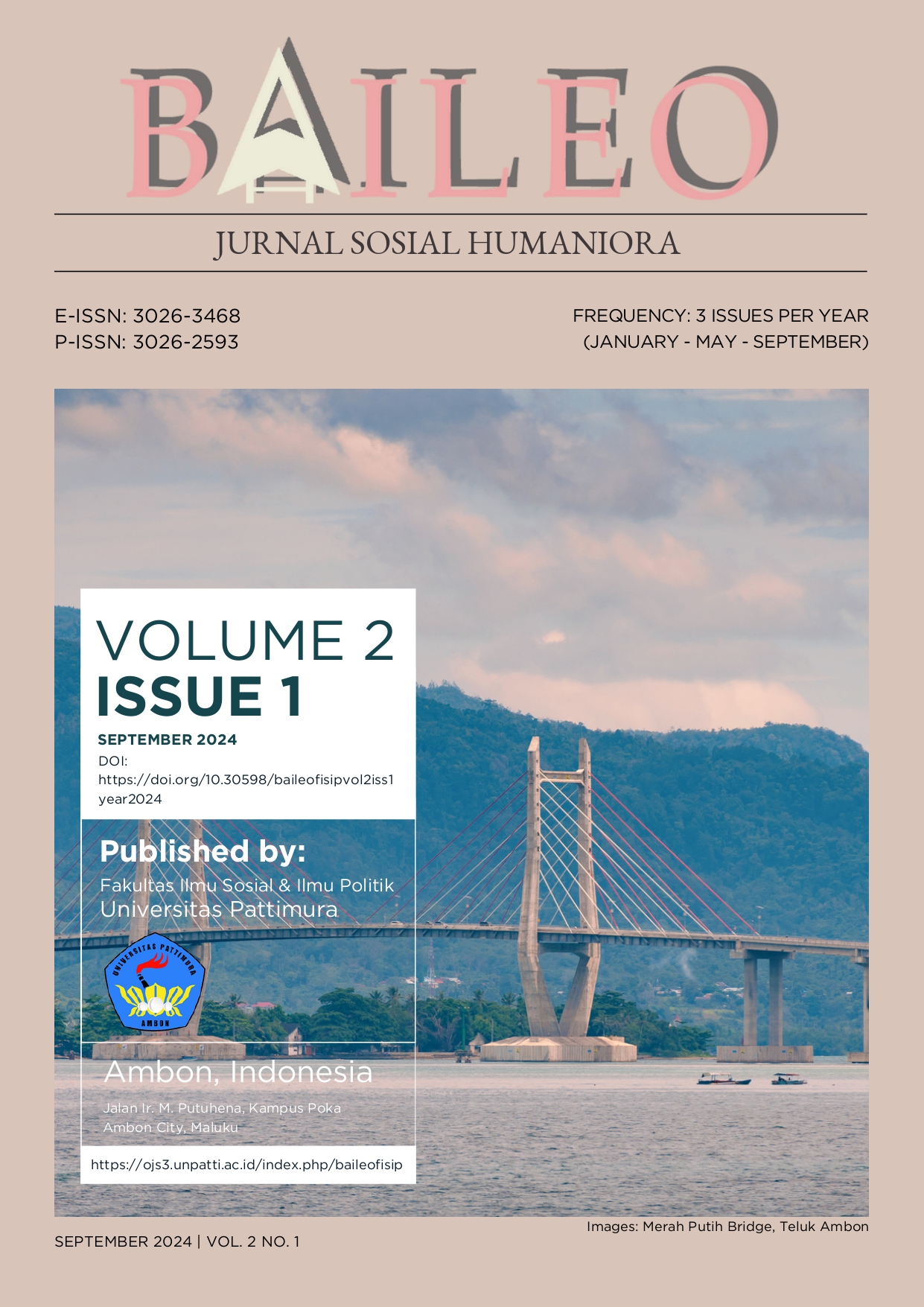The Communication Patterns Between Parents and Migrant Children in the Digital Era: Strengthening Emotional Connections Through Technology
Abstract
This study aims to analyze the communication patterns between parents and migrant children in the digital era and their impact on emotional connection between both parties. Digital technology provides an opportunity for parents and children to stay connected despite being separated by distance; however, the intensity of communication plays a crucial role in shaping the quality of this relationship. This research was conducted on migrant students living in dormitories at Pattimura University using a qualitative approach. Data collection techniques included observation, in-depth interviews, and documentation. The findings indicate that migrant children who frequently communicate with their parents feel more emotionally connected, experience less loneliness, and are able to develop independence and new experiences. Conversely, students with lower communication intensity tend to feel lonelier but view this as a coping strategy to stay focused on their lives away from home. Some students reported that excessive communication with parents could trigger excessive longing and a strong desire to return home. The novelty of this study lies in understanding how digital technology serves not only as a communication tool but also as an emotional bridge for families separated by distance. This study recommends that further research explore the psychological and social aspects of communication intensity and its impact on the emotional well-being of migrant children. The findings contribute to the development of social sciences and humanities, particularly in understanding the dynamics of family communication in the digital era.
Downloads
References
Afdhal, A., Prihatina, E., Siregar, Y. A., & Hidayat, R. (2023). Kontestasi Aktor di TikTok Dalam Mencapai Popularitas. The Journal of Society and Media, 6(2), 444–465. https://doi.org/10.26740/jsm.v6n2.p444-465
Baldassar, L., Wilding, R., & Baldock, C. (2020). Transnational Families and Technology. Journal of Family Communication.
Chung, J. (2020). Digital Communication and Family Dynamics: The Role of Technology in Long-Distance Relationships. Family Relations Journal.
Creswell, J. W. (2017). Research Design: Qualitative, Quantitative, and Mixed Methods Approaches. Sage publications.
Fauziah, M. A., & Arjanggi, R. (2021). Kesejahteraan Psikologis Ditinjau dari Regulasi Emosi pada Ibu yang Mendampingi Anak Sekolah dari Rumah. Jurnal Psikologi Integratif, 9(1), 62–75. https://doi.org/10.14421/jpsi.v9i1.2105
Giddens, A., & Sutton, P. W. (2021). Essential concepts in sociology. John Wiley & Sons.
Herry-Priyono, B. (2016). Anthony Giddens: suatu pengantar. Kepustakaan Populer Gramedia.
Julika, S., & Setiyawati, D. (2019). Hubungan antara Kecerdasan Emosional, Stres Akademik, dan Kesejahteraan Subjektif pada Mahasiswa. Gadjah Mada Journal of Psychology (GamaJoP), 5(1), 50–59. https://doi.org/10.22146/gamajop.47966
Kovačević, B., & Kovačević, I. (2017). Sociology of Global Risk Society:(Anthony Giddens and Ulrich Beck). European defendology center for scientific, political, economic, social ….
Leavy, P. (2022). Research design: Quantitative, qualitative, mixed methods, arts-based, and community-based participatory research approaches. Guilford Publications.
Lim, J., Tan, S., & Koh, P. (2020). Maintaining Emotional Connection: Technology and Family Communication in the Digital Age. Asian Journal of Communication.
Madianou, M., & Miller, D. (2020). The Impact of Polymedia on Transnational Family Communication. Media, Culture & Society.
Miles, M. B., & Huberman, A. M. (2020). Qualitative Data Analysis: An Expanded Sourcebook (9th ed.). sage.
Neuman, L. (2015). Social Research Methods: Qualitative and Quantitative Approaches (7th Editio). Index.
Park, H., Choi, Y., & Kim, S. (2021). Digital Family Ties: How Technology Shapes Communication Between Migrant Children and Their Families. Communication Research Reports.
Ramdhan, R. M., Manuputty, F., Murwani, P., Makaruku, N. D., Afdhal, A., Darakay, J., & Hidayat Putra, M. A. (2022). Perubahan Gaya Hidup Keluarga Buruh Pabrik PT Muara Griya Lestari Kabupaten Sukabumi Jawa Barat. Jurnal Mahasiswa BK An-Nur : Berbeda, Bermakna, Mulia, 8(3), 121. https://doi.org/10.31602/jmbkan.v8i3.8712
Rudi, J., Segrin, C., & Howard, S. (2020). The Emotional Costs of Digital Communication: Insights from Migrant Families. Journal of Intercultural Communication Research.
Satriawan, E., Hidayat, M., & Pratama, A. (2021). Teknologi Digital dan Perubahan Pola Komunikasi Keluarga di Indonesia. Jurnal Komunikasi Indonesia.
Shih, P.-Y., Lin, M.-C., & Chen, Y.-H. (2021). Emotional Labor in Digital Family Communication: A Case of Migrant Families. Communication Monographs.
Wang, S., & Liu, J. (2022). The Role of Technology in Migrant Family Communication: Challenges and Opportunities. New Media & Society.
Yoon, K., & Hong, S.-M. (2022). Media Use and Emotional Well-Being Among Migrant Families: Analyzing Communication Patterns. Journal of Family Studies.
Zahra, F. F., Hidayat, R., & Afdhal, A. (2023). Mencairnya Identitas Mahasiswa Melalui Second Account di Instagram. The Journal of Society and Media, 6(2), 508–526. https://doi.org/10.26740/jsm.v6n2.p508-526
Zhang, T., Chen, P., & Li, X. (2022). Technology, Migration, and Family Communication: The Double-Edged Sword of Digital Connectivity. International Journal of Communication.
Copyright (c) 2024 Celvin Yhosep Sinaga, Aholiab Watloly, Simona Christina Henderika Litaay

This work is licensed under a Creative Commons Attribution 4.0 International License.




